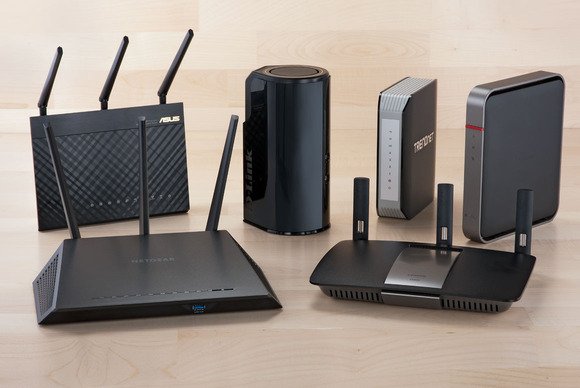Previously it was easy to predict what might be coming with the next PlayStation. We could have made a reasonable guess that the PS5 would arrive around six years after the PS4, that it would feature some beefed up internals, and that it would probably feature some refinements to Sony's operating system.
Yes, Sony's mid-generation console upgrade to the PS4 has changed everything we've come to expect from console generations, and alongside Microsoft'sProject Scorpio it's ushering in a new era in games consoles.
Instead of mammoth releases every six years, we might start to see a smartphone-style model, where new consoles come out every two or three years, with more minor improvements that allow them to maintain backwards and forwards compatibility in their game libraries.
This development casts doubt on whether we'll actually end up seeing a 'proper' PlayStation 5
There's a chance the PlayStation 5 will be the big, component-packed box we've grown accustomed to heating our living rooms. But it also could be a palm-sized streaming device or dive even deeper into the world of game streaming skipping traditional hardware systems altogether. There are a half-dozen equally likely scenarios about how Sony can change its system, however, if we were a betting site, it's unlikely that the PS5 will change too much.
Why? Sony isn't big on change.
Gazing back 20 years to the original PlayStation and its successors – yes, you're that old – it's fascinating how little really changed until the internet explosion of the last few years.
That puts the PS5 in a strange position. When the time comes for a new system in the next five to 10 years, will Sony take this opportunity to change its platform forever or will it stick to its guns?
Here's what Sony needs to place at the top of the priority list for its next system.
Discs are so 20 years ago
Now that PlayStation Now and streaming capabilities are the norm rather than the exception, shouldn't we scrap the disc drive already?
We can hear it from here. Despite the magazine dropping the legendary demo disc in the middle of last year, ex editor of Official PlayStation Magazine, Ben Wilson disagrees.
"Steam on PC has taught us that disc drives are becoming less and less necessary, but I can't see them being phased out completely for a while yet," he says.
"People love their boxed products, and 'experts' have been predicting the 'imminent' demise of the CD for more than 20 years. Remind me how that one has turned out? There will always be those who prefer special editions and sexy packaging to invisible downloads, and it's those guys and girls who'll ensure disc drives live on within gaming in some form."
Looking at the ages of the people investing in technology (that's us remember, and let's be honest, we're not getting any younger) we do still have the desire to buy physical products despite their ready availability online.
But it's not just PlayStation (and better pricing on the PlayStation Store) that needs to evolve here. Our broadband speeds largely still leave much to be desired and a solid online infrastructure will have to be implemented before we depend solely on fibre-optic wires to get our gaming fix.
Adding an extra hurdle to a disc-less world, there's yet another reason why the upcoming preloading feature will be like a gift from the PlayStation gods: size.
"I'd argue that the ever-expanding size of games would cause significant issues for a digital-only machine," says Matt Pellett, current editor of Official PlayStation Magazine."Both in terms of download times and the number of games people could store on their hard drive at any one time."
Of course, there are also Ultra HD Blu-rays to consider. These high-capacity discs can store 50-100GB of data, and considering how intricate games are becoming, it's the sort of media we'll need our next next-gen games to be shipped on. But the discs are part-and-parcel with the player itself.
Sony is quite likely to want to keep momentum going with the new disc format too and so it wouldn't be a huge surprise to see it wanting to do that with a UHD Blu-ray drive in the next version of the PlayStation.
With the new PS4.5 promising support for 4K resolutions, we wouldn't be surprised if the new UHD Disc format ended up making it into a PlayStation before the PS5.
PlayStation Now is the time
Then again, Sony already has a solution to its physical media problem with PlayStation Now. Game size? No problem. It's all in the cloud.
But what about choice? If it wanted to, Sony could fill it with every game from its back catalog.
"If we end up in a place where streaming games is the norm, like it has become in the movie/box-set rental market, then the console itself is under threat," says PC Gamer's resident tech expert Dave James. "And if there's no actual console, what do the developers target and what do they develop on and how does Sony make its money?"
So while a physical console still seems the most attractive prospect here for Sony, PlayStation Now seems an excellent solution as an additional feature, especially for accessing games from previous generations that saves you blowing the dust off that enormous original PS2 you've not been able to say goodbye to.
Another matter is the thorny issue of cost. If we've shelled out for the newest console, what's the sting for the back catalogue?
"The big talking point of the PlayStation Now has been the price-point," says Pellett. "Sony needs to get this right in order to be as competitive in the streaming market as it is in the console hardware market. With Sony's library of games and the ability for people to revisit the games they can't play on PS4 – and in some cases can't buy these days – it could become a hugely important part of the PlayStation family."
The VR revolution
Playstation VR looks like the future. No, really.
The Oculus Rift and HTC Vive may be available now, but unless you have a pretty beastly (read: expensive) gaming PC, you're not going to be able to use one anytime soon. PlayStation VR is much more affordable in this regard, because it should work with your existing console, which is much cheaper than most of the gaming PCs out there.
For reference, Sony has said that the headset will run you $399 / £349 / AUD$549 / €399 and will be available starting in October.
But don't get too excited just yet, there's a catch. With both the Vive and Oculus requiring such powerful machines to run, it's difficult to see the PS4 coping with the demands of PlayStation VR. The imminent arrival of the PS4.5 appears to be in part a response to these concerns, but we think it's going to take more than a hardware refresh to make a truly VR-ready PlayStation.
By the time the PS5 arrives, virtual reality will likely be established as a dominant force in gaming, hopefully resulting in a console that's built from the ground up for VR experiences.
VR is currently too new for us to be able to hypothesise about whether it will completely replace gaming on a traditional TV screen, but it's interesting to think what the PS5 could end up looking like if it ends up being a console that's designed for VR first.
At that point would the console's entire front-end be a VR menu rather than a traditional screen-based menu? Will we be reaching out to select which games we want to play next with our motion controllers?
Of course that's assuming the PS5 isn't just completely built into a VR headset. The miniaturisation of electronics that would be required to make that work would be immense, but in combination with cloud streaming it could theoretically be possible one day.
A question of 'if' rather than 'when'
Of course, with all these iterative software updates, and the PS4.5, we might not ever actually see a PS5. When Shuhei Yoshida, president of Sony's Worldwide Studios, was asked about the PS5 by Oddworld developer Lorne Lanning, he responded that he thought the PS5 was a question of 'if' rather than 'when'.
Instead of major console refreshes, Sony may instead continue to update the console on a much more regular basis, bringing small hardware changes like those seen in the PC hardware market.
After all, now that the PS4 has adopted a more standard x86 processor as opposed to the enormously complex 'Cell' processor present in the PS3, it is now very similar to a standard desktop PC. Indeed, some have even used the phrase 'PC in a box' to describe the PS4.
We're still too attached to our physical consoles to completely embrace the idea of the PS5 never making an appearance, but there are some definite signs pointing in that direction.
Conclusion: The old rules no longer apply
For four hardware generations Sony played by the rules. Each generation lasted for six years before a piece of hardware an order of magnitude more powerful was released to replace it. It was simple, and people knew what they were getting when they bought their new console.
Then the PS3's internet connectivity happened, and the old rules more or less flew out the window. Suddenly firmware updates meant that the console's functionality could be upgraded bit by bit, resulting in a piece of hardware which was fundamentally different from what was initially released.
Now with the PS4.5 Sony is rewriting the rules of the game again and releasing new hardware exactly halfway through the standard six year console cycle.
By the time we get to the PlayStation 5 the rules might have changed once more. Will we be streaming the majority of our content? Will VR have replaced the TV as our primary display?
With questions these big it's almost crazy to think that the question of physical media has fallen to the sidelines. Internet speeds will have significantly improved by the time the PS5 sees the light of day, but will the amount of data required for 4K mean that discs are still required?
The future of the whole console concept is completely uncertain at this point, but we can't wait to learn more about where it's all heading.



































